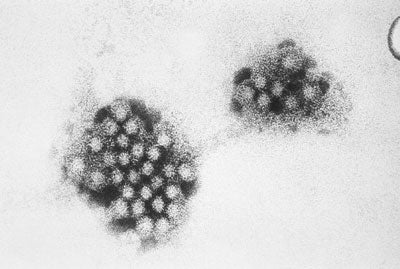A virus can spread around an entire building within just hours of contaminating one surface
A new study shows the rapid spread of a virus in communal buildings

Your support helps us to tell the story
From reproductive rights to climate change to Big Tech, The Independent is on the ground when the story is developing. Whether it's investigating the financials of Elon Musk's pro-Trump PAC or producing our latest documentary, 'The A Word', which shines a light on the American women fighting for reproductive rights, we know how important it is to parse out the facts from the messaging.
At such a critical moment in US history, we need reporters on the ground. Your donation allows us to keep sending journalists to speak to both sides of the story.
The Independent is trusted by Americans across the entire political spectrum. And unlike many other quality news outlets, we choose not to lock Americans out of our reporting and analysis with paywalls. We believe quality journalism should be available to everyone, paid for by those who can afford it.
Your support makes all the difference.A virus can spread around a whole building within two hours of coming into contact with just one surface, a new study has found.
A team at the University of Arizona, Tucson found that when a virus, for example the norovirus, contaminates a single doorknob or elevator button it spreads rapidly through entire office buildings, hotels or hospitals.
The team, led by microbiologist Charles Gerba, used bacteriophage MS-2 as a surrogate for the human norovirus because it is similar in shape, size and resistance to disinfectants.
They placed it on a single commonly touched surface, such as a door knob or table, at the beginning of a day in office buildings, conference room and in a health care facility in Arizona.
They then tested surfaces capable of carrying infectious organisms, such as light switches, bed rails, table tops, countertops, coffee pots handles, sink tap handles, door knobs, phones and computer equipment for traces of the bacteriophage at various times between two and eight hours later.
The team found that up to 60 per cent of the surfaces sampled were contaminated with the virus within just two to four hours.
However, there is a simple solution for combating the spread, says Mr Gerba, who found using disinfecting wipes registered as effective against viruses like norovirus and flu, along with hand hygiene, reduced the spread by between 80 and 99 per cent."
Mr Gerba concluded: “The results show that viral contamination of (surfaces) in facilities occurs quickly, and that a simple intervention can greatly help to reduce exposure to viruses.”
His research was presented at the 54th Interscience Conference on Antimicrobial Agents and Chemotherapy (ICAAC) in Washington.
Join our commenting forum
Join thought-provoking conversations, follow other Independent readers and see their replies
Comments